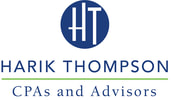|
Despite all the gridlock in Washington, as well as an impeachment, the SECURE Act has passed. It changes a number of important retirement plan rules. The act runs over 120 pages, so the experts will be poring over it for some time. Meanwhile, a number of sources have weighed in on what they think are the key provisions. (Note that last-minute alterations and more detailed analysis may lead to additional changes in the coming weeks.) The Society for Human Resource Management listed several changes as particularly noteworthy. The act will allow:
Appropriation legislation also made some key changes as the year ended: The government has repealed the controversial Cadillac tax on high-end health plans. This repeal is part of a year-end spending bill. There are also a list of extenders that at least temporarily change some tax provisions. These include:
Comments are closed.
|
Newsletter articles are posted every 2 weeks. If you would like to have our e-newsletter delivered directly to your inbox, please sign up. Your information is confidential; you can unsubscribe at any time. Subscribe. Categories
All
|
Proudly powered by Weebly

 RSS Feed
RSS Feed